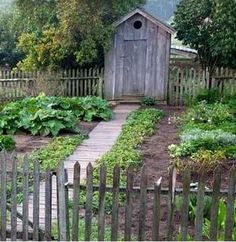 I have a dear, sweet friend who is something of a throwback to an earlier, more genteel time. I don’t think she’d mind this characterization. She’s absolutely lovely. The first time I heard her excuse herself and her little girl to “use the loo” I simply smiled. It was totally in character.
I have a dear, sweet friend who is something of a throwback to an earlier, more genteel time. I don’t think she’d mind this characterization. She’s absolutely lovely. The first time I heard her excuse herself and her little girl to “use the loo” I simply smiled. It was totally in character.
And, I totally get it. I, too, am a bit of a throwback. I am not comfortable with the out-there-ness of talk of private bodily functions. I make no apologies.
The key word here is PRIVATE.
Hence the colonial privy.
As we look back on our colonial forebears and at their lack of indoor plumbing, the question arises: what did they call the loo?
History.org tells us this, “This little structure—of brick or wood, painted or unpainted, of vernacular or high-style design—was also known as a bog, boghouse, boggard, or bog-shop; a temple, a convenience, or temple of convenience; a little house, house of office, or close stool; a privy or a garde-robe, terms that descend from the Middle Ages. Or a jakes, a sixteenth-century term. Williamsburg’s St. George Tucker once defined a jakes as a garden temple.”
In later, pioneer times, it was an outhouse. In colonial times, these outhouses ranged from temporary sheds that were moved when the pit was full, to structures that were fashioned to match the house. Many homes didn’t have “a necessary” at all. This was a time of transitioning from chamber pots. Public buildings, like churches or taverns, though, did have a privy or even several out back.
And, here’s another thing that might make you squirm. Leather was tanned with urine. So many communities had great vats where urine was stored. Then pole men would come, take away the vats and sell the urine to the tanners. Ahem.
While we’re on the topic, where in heck did the term “restroom” come from? I don’t think I have ever rested in one.
Wonder how long it will take to get “skip to the loo” out of my head.

